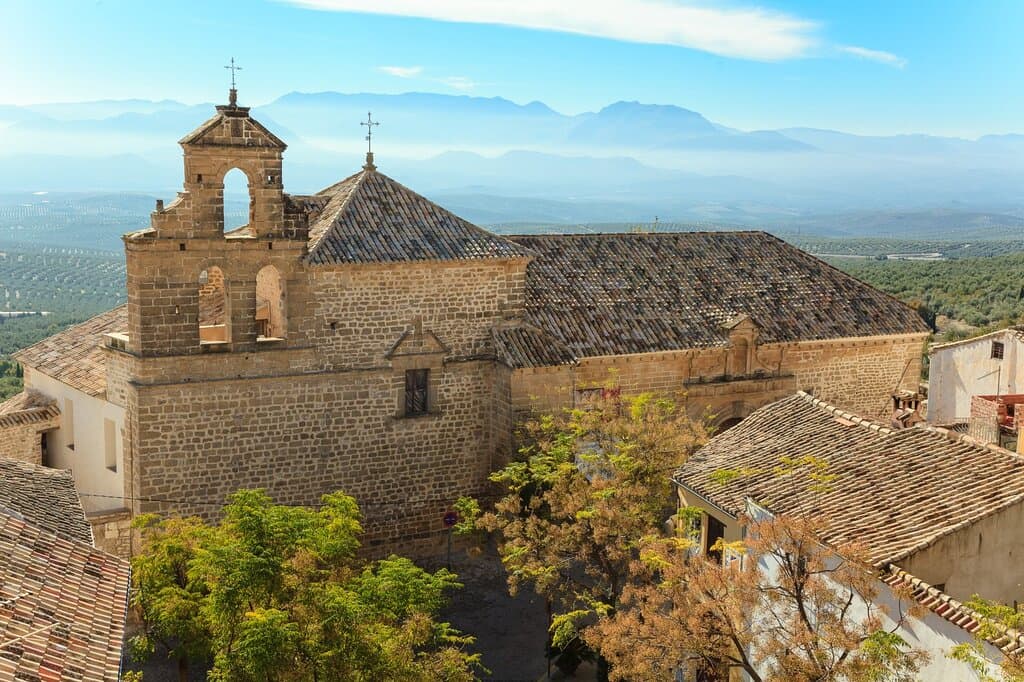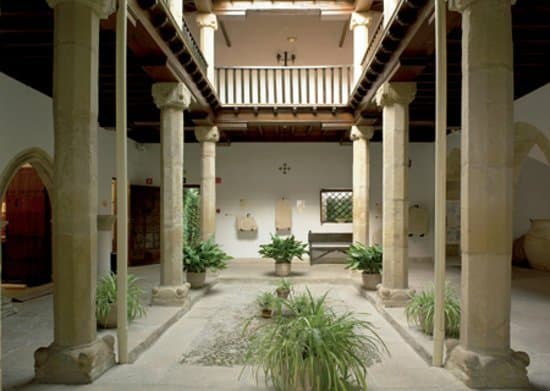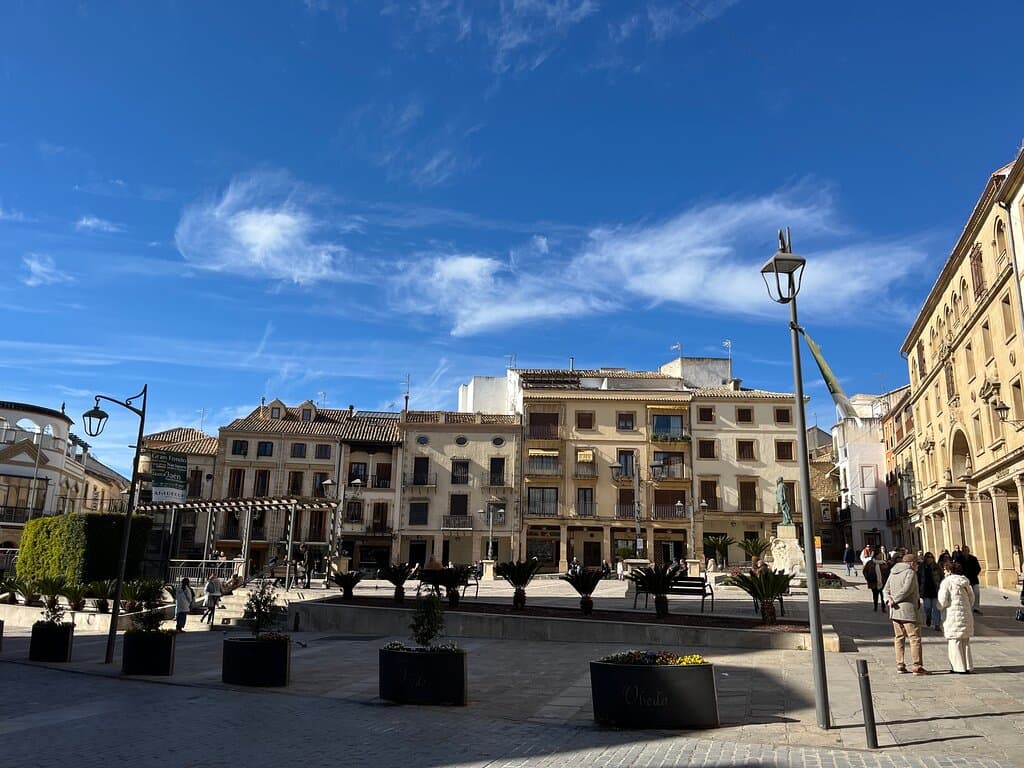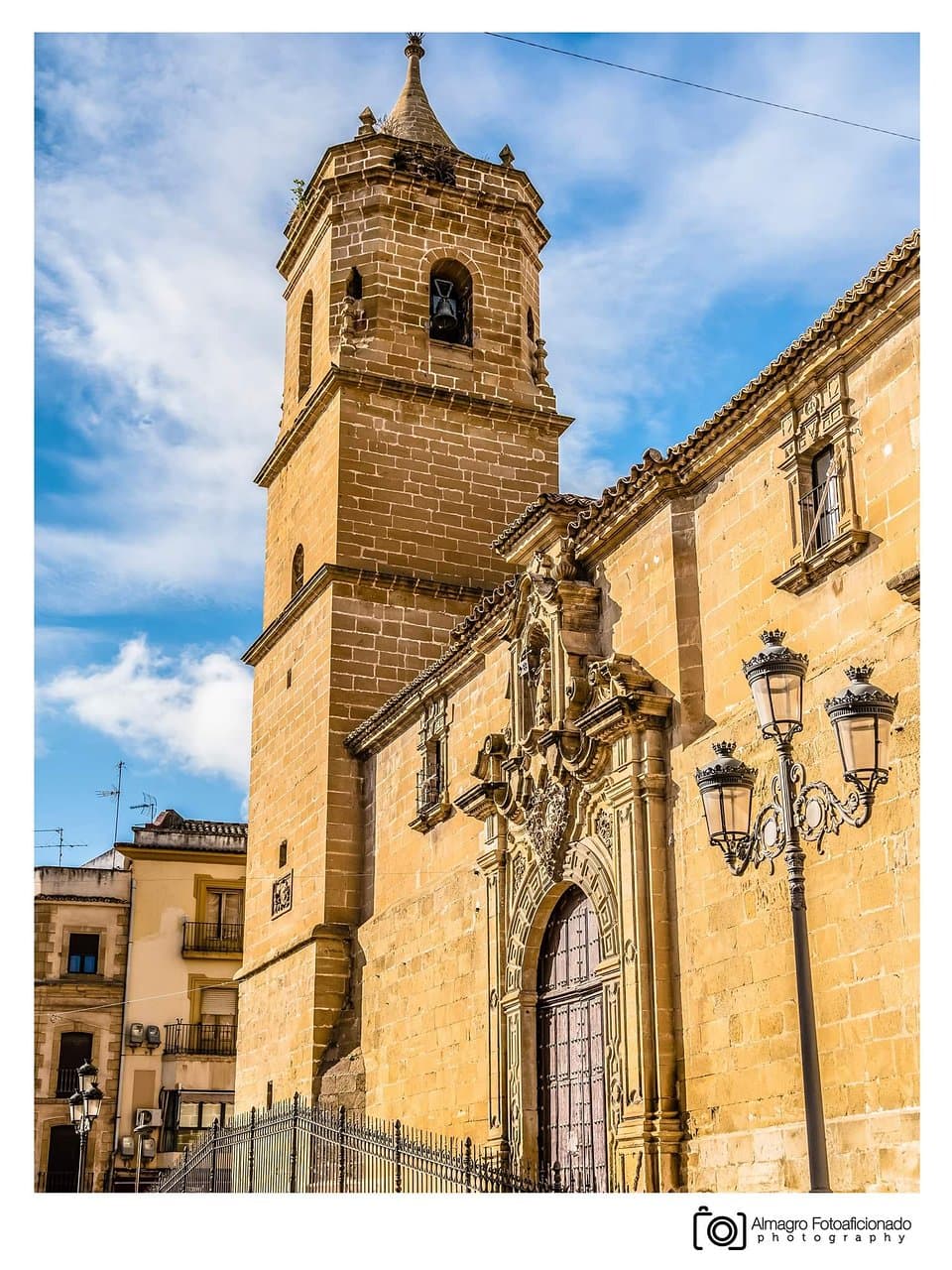Pósito de Úbeda
A historical echo of a 16th-century royal granary, now subtly integrated into a residential building, featuring a notable heraldic altarpiece.
Highlights
Must-see attractions

Social
From TikTok & Reddit
Best Time
Best for viewing exterior details
Pósito de Úbeda
Best Time
Best for viewing exterior details
Highlights
Must-see attractions
A historical echo of a 16th-century royal granary, now subtly integrated into a residential building, featuring a notable heraldic altarpiece.
"A silent witness to history, the Pósito de Úbeda's heraldic altarpiece offers a glimpse into 16th-century civic life."
Look for the Altarpiece
Focus on the exterior to find the main historical remnant: a detailed heraldic altarpiece with shields and a legend. :camerawithflash:
Understand its Past
Imagine its former role as a grain storage institution. It's a piece of 16th-century social history. :scroll:
Highlights
Discover the most iconic attractions and experiences
Heraldic Altarpiece
A beautifully preserved 16th-century altarpiece with coats of arms and an inscription, a silent witness to history.
Architectural Integration
Observe how the historical elements are seamlessly blended into a modern residential facade, showcasing adaptive reuse.
Plans like a pro.
Thinks like you
Planning Your Visit
A Glimpse of History
Understanding the Remains
Best Times
Insider Tips
from TikTok, Instagram & Reddit
Look for the Altarpiece
Focus on the exterior to find the main historical remnant: a detailed heraldic altarpiece with shields and a legend. :camerawithflash:
Understand its Past
Imagine its former role as a grain storage institution. It's a piece of 16th-century social history. :scroll:
Combine with Baeza Tour
Best visited as part of a broader exploration of Baeza's historical sites. :walking:
Tips
from all over the internet
Look for the Altarpiece
Focus on the exterior to find the main historical remnant: a detailed heraldic altarpiece with shields and a legend. :camerawithflash:
Understand its Past
Imagine its former role as a grain storage institution. It's a piece of 16th-century social history. :scroll:
Combine with Baeza Tour
Best visited as part of a broader exploration of Baeza's historical sites. :walking:
What Travellers Say
Reviews Summary
Visitors find the Pósito de Úbeda to be a historically interesting site, particularly appreciating the well-preserved heraldic altarpiece that hints at its 16th-century importance as a royal granary. While acknowledging that much of the original structure is now integrated into residential buildings, many still find it a worthwhile exterior view, especially when exploring Baeza's rich historical tapestry.
"We spent a couple of hours here on a road trip around Andalusia. Baeza is a quaint Spanish town and this is the main plaza which is very pleasant with a central pedestrianised area with cafes lining the sides. From here you can catch a tourist train around the town or just walk in to discover the historical buildings like the cathedral and the university."
Nicola Byrnes
"Nice"
David Mahabir
"Little remains of what was once the Pósito Real. Most of the original construction has been destined for private homes. As a silent witness of what was, only a heraldic altarpiece remains, with the shields of Carlos I, the city of Baeza and Corregidor and a legend of how it was built."
Juan Salas
What People Like
What People Dislike
Frequently Asked Questions
🚇 🗺️ Getting There
The Pósito de Úbeda is located within the historic center of Baeza. It's easily accessible on foot if you are already exploring the town. If arriving by car, there are parking areas on the outskirts of the old town, followed by a short walk. :car:
Yes, the Pósito de Úbeda is situated in the heart of Baeza, making it convenient to visit alongside other historical landmarks like the Cathedral and the University. :map:
🎫 🎫 Tickets & Entry
No, the Pósito de Úbeda is primarily viewed from the exterior. The historical altarpiece is visible on the facade of the residential building, and there is no admission fee. :free:
As it's an exterior view, there are no specific opening hours. You can observe the heraldic altarpiece at any time of day. :clock:
The original structure of the Pósito de Úbeda has been converted into private residences. Therefore, interior access is not possible for visitors. :house:
📸 📸 Photography
The primary photo opportunity is the heraldic altarpiece on the building's facade. Stand back slightly to capture the full detail of the coats of arms and inscription. :camerawithflash:
Yes, photography of the exterior, including the altarpiece, is permitted. Remember that it is part of a residential building, so be respectful of the residents. :iphone:
🎫 🏛️ Historical Significance
Historically, the Pósito de Úbeda was a royal granary, a crucial institution in the 16th century for regulating and storing wheat and other cereals to ensure the city's supply. :grain:
Little of the original construction remains visible. The most significant surviving element is the heraldic altarpiece on the facade, featuring shields of Charles I, the city of Baeza, and the Corregidor, along with a legend about its construction. :shield:
The Pósito de Úbeda dates back to the 16th century, a period when such institutions were vital for urban sustenance and economic stability. :calendar:
For Different Travelers
Tailored advice for your travel style
History Enthusiasts
Architectural Explorers
Deep Dives
In-depth insights and expert knowledge
The Echoes of a Royal Granary
Today, the physical presence of the Pósito is largely integrated into a residential building, a common fate for historical structures in evolving urban landscapes. While the grand edifice is gone, its historical importance is preserved through a striking heraldic altarpiece on the facade. This detailed artwork features the coats of arms of significant figures and entities, including Charles I, the city of Baeza, and the Corregidor, alongside an inscription that speaks to the building's construction and purpose. It's a silent testament to a bygone era, offering a unique glimpse into the past for those who know where to look.
Architectural Adaptation and Preservation
The key surviving feature, the heraldic altarpiece, serves as a focal point for understanding the site's history. Framed by columns and adorned with intricate heraldry, it offers a visual narrative of the Pósito's significance. Visitors can appreciate the craftsmanship and the historical context embedded in this facade element. It's a reminder that even when a building's original function ceases, its historical and artistic contributions can endure, woven into the fabric of contemporary life.




Social
from TikTok, Instagram & Reddit